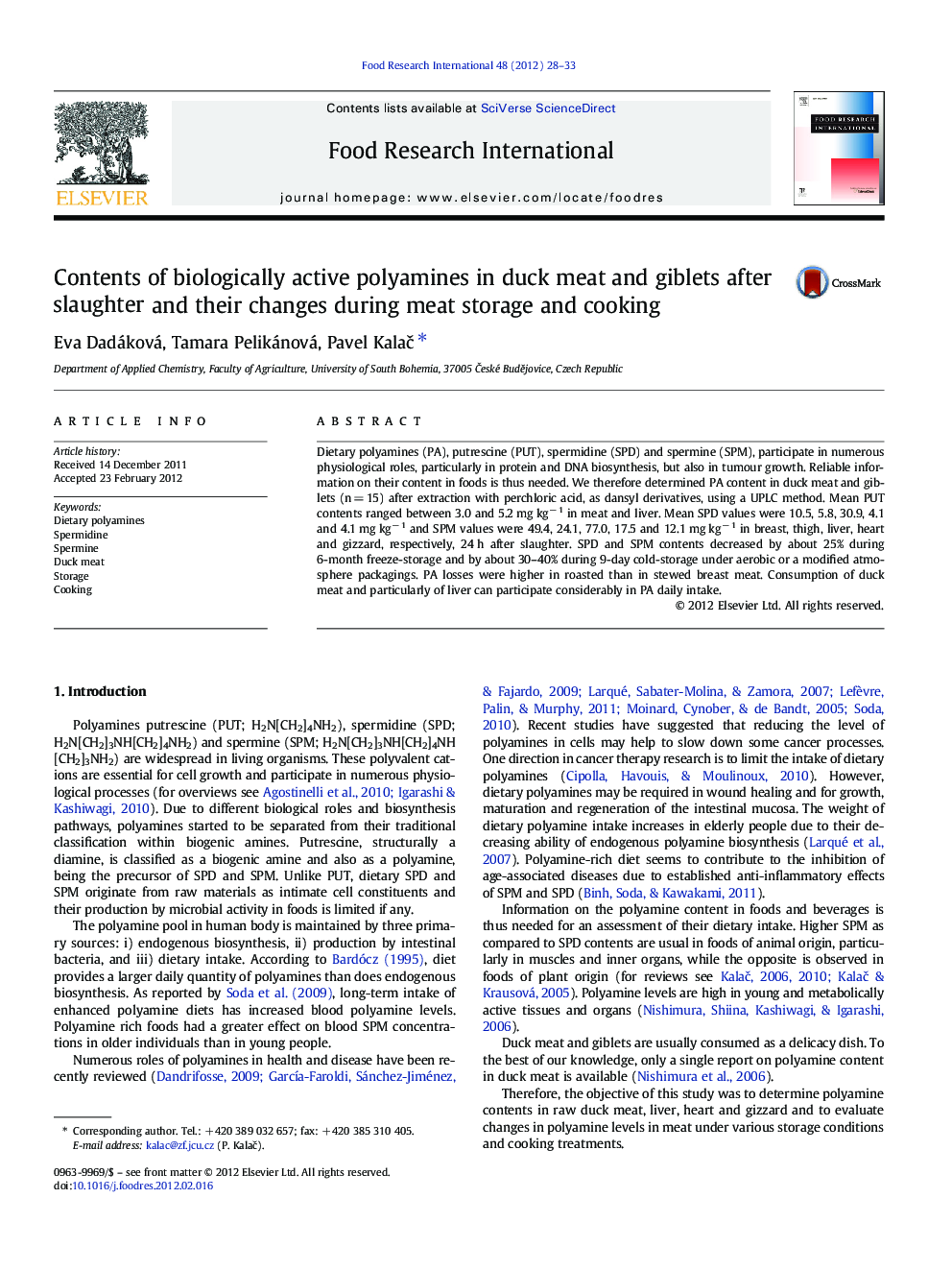| Article ID | Journal | Published Year | Pages | File Type |
|---|---|---|---|---|
| 6399230 | Food Research International | 2012 | 6 Pages |
Dietary polyamines (PA), putrescine (PUT), spermidine (SPD) and spermine (SPM), participate in numerous physiological roles, particularly in protein and DNA biosynthesis, but also in tumour growth. Reliable information on their content in foods is thus needed. We therefore determined PA content in duck meat and giblets (n = 15) after extraction with perchloric acid, as dansyl derivatives, using a UPLC method. Mean PUT contents ranged between 3.0 and 5.2 mg kgâ 1 in meat and liver. Mean SPD values were 10.5, 5.8, 30.9, 4.1 and 4.1 mg kgâ 1 and SPM values were 49.4, 24.1, 77.0, 17.5 and 12.1 mg kgâ 1 in breast, thigh, liver, heart and gizzard, respectively, 24 h after slaughter. SPD and SPM contents decreased by about 25% during 6-month freeze-storage and by about 30-40% during 9-day cold-storage under aerobic or a modified atmosphere packagings. PA losses were higher in roasted than in stewed breast meat. Consumption of duck meat and particularly of liver can participate considerably in PA daily intake.
⺠Polyamine contents are high in duck meat and particularly liver after slaughter. ⺠Polyamines decrease during cold-storage, freeze-storage and cooking of duck meat. ⺠Meat roasting causes higher losses than boiling.
